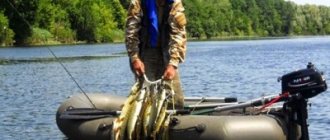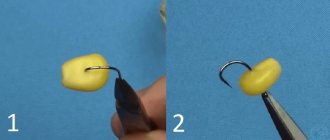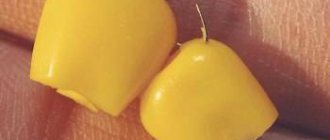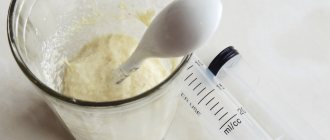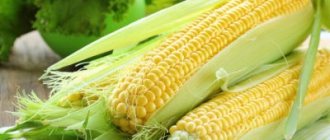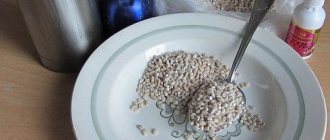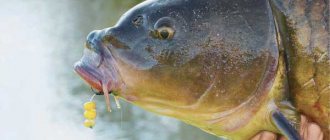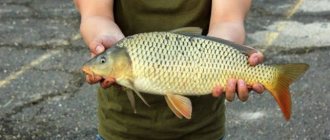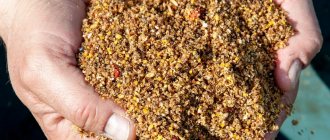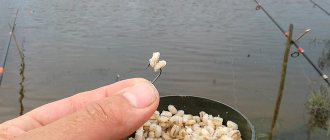Corn is one of the best, most effective and affordable baits for carp fishing. If you don’t want to cook the bait yourself, you can easily buy it in canned form at any grocery store; it is also suitable for fishing, holds the hook well and has an attractive aroma for fish. Corn is clearly visible even in muddy water, fines are completely cut off and this is not all the advantages of this attachment.
If you fish with canned corn, it is best to take the Bonduelle variety. It is larger and, according to some observations, more attractive to fish.
When to catch carp on corn
Corn is an excellent bait for catching carp, but it does not work all year round. It will be an excellent bait only in the summer, late spring and early autumn. In general, this bait only works in warm water. When water temperatures are low, carp should be caught using bait of animal origin.
In the hot season, carp responds well to bait of plant origin and it happily eats in huge quantities the plant bait it likes that comes across its path. Corn is one of those baits that he is unlikely to ignore. It looks very appetizing for fish.
Tactics for catching carp on corn
Catching carp with corn requires a generous amount of bait. You must create a feeding table out of groundbait and put your bait there too. The fish comes to the aroma and lingers on the feeding table for quite a long time. The feeding table should be replenished periodically so that the fish do not leave the feeding point.
When fishing with corn, the same corn can serve as bait. For bait, you can use smaller grains or overcooked ones, which are not suitable for hooking. Also, it can be added to any bait mixtures. Whatever bait you use, corn should be a mandatory part of the bait, since in our case it is the bait.
But first you need to determine a promising place to feed. And you should catch carp near snags, in areas of the reservoir with uneven bottoms, near holes, on edges and dumps. Carp also go into shallow waters in search of food, then they should be caught near thickets of reeds or reeds.
Depending on the weather, carp can occupy certain points of the reservoir, so on hot days you should look for it in holes, in thickets of coastal vegetation or under the crowns of trees hanging over the water. On cool but clear days, carp will, on the contrary, tend to shallow water and areas that are well warmed up by the sun.
Catching carp on corn is very effective using a float rod. Fishing takes place at a relatively short distance from the shore; it is very easy and convenient to feed the fishing point, attracting fish to it. But trophies are caught extremely rarely on a float rod.
It is very convenient to use carp rods or a feeder with long casting to get carp from their favorite places - all kinds of holes or shelters far from the shore. And if the reservoir is small, then you can successfully present the bait exactly to the opposite bank. And as you know, the bite is always better on the other side. Well, seriously, this tactic is good when there is no approach to the opposite bank and the only way to fish there is long casting. Fishing with carp gear with long casting often brings trophy specimens into the catch.
It is more difficult to feed fish when long-casting, but here a boat, a bait rocket, a boat or a slingshot come to the aid of the fisherman. Feeding with a rocket or slingshot will not work so precisely, but you can create a good feeding table for carp in any case and the fish will always spin next to your bait. And with the help of a boat you can bring both bait and tackle to the desired point.
The optimal time of day for fishing is from sunset to 11 am. During the day, carp bite extremely rarely. Usually, its fishing takes place overnight, then it is possible to catch all the most promising hours - sunset, dawn and the night itself. It is worth noting that in each body of water this fish behaves differently and is most active at different times.
There are reservoirs where carp bite exclusively in the morning, and others where they fish well for several hours at night, for example from 01:00 to 03:00. And there are reservoirs where you can’t catch it at all at night, although on others it’s quite successfully and consistently caught right at this time. Each body of water needs to be studied in order to adapt as much as possible to the behavior of the fish.
You should also know that carp is a very weather-dependent fish. When there is a sudden change in weather or changes in pressure, its activity decreases very noticeably, it becomes very difficult to catch it and, often, only professionals succeed in this in such weather, and then in much smaller quantities than in weather favorable for fishing.
Corn fishing equipment
To catch carp using corn, you can use several equipment options. One of them is placing grains directly on the hook, the second is using hair equipment, with this method the hook remains bare.
Using hair equipment is definitely better and more effective. When a carp bites, it sucks in the bait along with the bare hook; often you don’t even need to hook it; with this installation, the fish hooks itself quite reliably. But, nevertheless, it is better to do a control sweep.
When fishing with conventional equipment without hair, when the grains are dressed directly on the hook, the probability of idle bites is higher. The corn itself can prevent the fish from getting a good hook, or the carp can prick itself and spit out the bait. There is a separate article on the methods of planting corn on the website ryba4ok.ru, you can read it.
You can make the hair rig yourself - it’s quite easy to do, but in fishing stores it will cost a penny, so I think there’s no point in wasting time on making it.
Groundbaits
Here we will describe 4 processes. The recipes are interesting and workable. Sometimes carp like mixtures, the composition of which is difficult to even imagine. For example, the first one.
With semolina and cat food
The recipe is not only interesting, but also simple: no cooking or soaking is required. You just need to mix the following ingredients:
- corn – 2 kilograms;
- semolina – 1 kilogram 200 grams;
- breadcrumbs - the same amount;
- 400 grams of roasted peanuts, cake and milk powder;
- half a kilogram of dry cat food and wheat flakes;
- and 300 grams of granulated sugar.
Mix everything and leave for 15 minutes. When fishing, add soil and water.
"Seductive trio"
You just need to cook porridge from three cereals: pearl barley, corn (you can take crushed corn) and peas (a glass of each crop). We cook it in the same way as all porridges, it can be overcooked, the main thing is not to burn it. In the process, add a little unrefined sunflower oil and add 2 tablespoons of honey. A fifth of the entire dish will be breading, and a tenth will be cake. Let sit for 30 minutes when cool.
Botvinya for "pig"
Also an incomprehensible mixture, but it works even when the carp is not particularly hungry. You just need to mix:
- 2 kilograms of corn (can be crushed);
- one and a half – any ground cereals (assorted);
- they include 400 grams of milk powder (cream) and cat (or dog) food;
- 300 grams of canned corn;
- 2 tablespoons of aromatic honey;
- 200 – cake;
- and 8 crushed sinking boilies.
Likewise, let it sit for 20 minutes. When fishing, we already carry out mixing. By the way, this recipe is actively used by feeders.
Fruit-cereal mix
The recipe is special, and it is intended for catching carp using corn in reservoirs along the banks of which any fruit tree or bush with berries grows. The following ingredients are needed:
- 400 grams each of dry corn, pearl barley and breadcrumbs;
- 300 grams of “sweet corn” (canned);
- two tablespoons each of honey and unrefined sunflower oil;
- 100 grams of chopped fruits or berries that grow near the pond where we will attract carp.
We cook porridge from the cereals, remove it from the heat and at this moment add honey and butter. When it cools down completely - fruits, canned food and breading. The result is an effective bait with “native” treats.
How to cook your own corn
Canned corn has one significant drawback - the can may contain a low-quality product or simply not suitable for fishing. The grains may be too small, crushed or overcooked. Of course, if you have found a certain brand that meets all the requirements for fishing, then there is no question.
But most fishermen still prefer to prepare corn for carp fishing themselves. And you can prepare it in two ways - boiling and fermentation.
Cooking
Before boiling corn, it must be soaked in water for at least one day. If possible, you can soak it longer - 2-3 days. As a result of soaking, it softens and swells, now it can be easily cooked.
Cook for about 30-60 minutes. Readiness is determined by its softness. It is necessary to achieve a state of corn where it does not fall apart, and, at the same time, becomes quite soft. Just try squeezing the grain with your fingers; it should crush with moderate force but withstand light compression.
Fermentation
Fermentation is the fermentation of a product due to the enzymes contained in it. That is, we need to achieve fermentation of corn. Carp bite on fermented corn with particular enthusiasm, since they are very attracted to the aroma and taste of such bait. It certainly has an advantage over its boiled and canned counterpart, but not all fishermen know about this method of preparation. The site ryba4ok.ru will share this secret with you.
Fermentation begins with cooking. It is necessary to lightly boil the corn until half cooked. The grains are still quite hard, but they can already be placed on the hook. In addition, they will soften further during fermentation. Corn for fermentation should be cooked a little less than when cooking it normally.
Then it is poured into a fermentation container - this can be a saucepan or bucket. There may still be water in the corn after cooking, but if there is not enough water, you will need to add more. Water should cover the corn by 3-5 cm.
For half a bucket of corn you need to add 200 grams of sugar, 20 grams of active yeast and honey - 2-3 tablespoons. Honey will give it an additional aroma, and sugar and yeast will promote faster fermentation, since the bacteria through which this process occurs require these components for their vital activity.
The next thing we need to do is cut off the access of oxygen to our future bait. To do this, you need to add vegetable oil to it. Carefully pour the oil into the container with the corn so that it creates a protective top layer that will not let air through. We leave this process for a few days, after which we can go fishing and use corn as the main bait - the carp will not resist.
Corn fermentation: video
Bait preparation
Now fishing stores offer a large selection of baits to attract carp. But, as practice shows, it is cheaper and more effective than catching carp with corn, nothing has been invented yet. Corn is perhaps the most common, popular and affordable type of bait for catching carp. You can purchase it at a grocery store, fishing department, or prepare it yourself.
When buying corn at the grocery store, do not forget that in pursuit of cheapness you can make a mistake. When choosing a product that is not of the highest quality, you need to be prepared for the fact that the jar will contain a lot of crumpled, broken and small grains, which is very problematic to place on a hook. In addition, such bait will attract a lot of small fish, which can easily pull the grains off the hook before the large fish approaches.
Most fishermen are of the opinion that when choosing canned corn in a supermarket, preference should be given to one fairly well-known brand
As practice shows, this product attracts the attention of fish much more than others, apparently due to the high content of aromatic components and flavor enhancers
Fishing stores also offer a wide range of corn products: canned, steamed, fermented, with the addition of various flavors and bite stimulants. If you prefer baits that are stored for a long time in hermetically sealed glass containers, you need to be prudent and uncork the jar of bait at home, and not at the pond. Unfortunately, some manufacturers of such products do not follow the technology, due to which the corn in the jar remains hard and is not suitable for carp fishing. Having discovered this at home, you won’t have to waste fishing time solving the problem that has arisen.
Many fishermen prepare their own baits and baits. Even at home you can not only cook, steam, but also ferment corn. True, first you need to stock up on consumables. You can collect it yourself by parking during a trip to nature near a corn field; if there is none, you can buy corn in specialized agricultural stores that sell animal feed. During the period of cob ripening, fishing with grains of milky ripeness, which do not require heat treatment, is popular.
Boiled corn is easy to prepare. The grain, freed from the cobs, is filled with water for about a day, and then put on fire and cooked until half cooked. After this, it is removed from the stove and continues to reach condition in a slowly cooling pan. The line between “undercooked” and “falling apart” is quite thin here, so it is better not to overcook the product, otherwise you will have to use it only as a supplement to bait.
Some fishermen steam corn in a similar way, leaving it after heat treatment not in the pan, but placing it in a thermos for about 8 - 10 hours. Natural flavors are often added to the grains during the cooking process: honey, vanillin, garlic, strawberry
However, here it is important not to overdo it and follow the well-known rule - use those aromas that are natural for a given time period and for a given area
Preparing fermented corn at home is a long-term process and requires airtight containers and, if possible, a separate room. The beginning of preparation is similar to the previous one. The grains are soaked in water at room temperature, covering 15 cm above the top layer, sealed with a lid and placed in a warm place to speed up the fermentation process. The process itself begins after 2–3 days and is accompanied by the release of a strong odor. After a week of fermentation, corn can be used as bait, but the process itself can continue, as experienced anglers claim that the smell of fermented corn intensifies with fermentation time and can attract trophy carp from a long distance.
Tricks for catching carp on corn
You all know that carp fishing involves a long wait for a bite. You just sit and wait for the fish to bite, peering into the float or listening to the alarm. This fish is very smart and careful, so sometimes you have to wait for hours, or even days, for its bite.
Catching carp with corn, although it has its unconditional advantages - this bait is clearly visible, it smells good... But carp can simply swim past it for a very long time and only after 5-10 approaches decide to try it. But if you use it in a sandwich with other bait, then the carp simply will not be able to swim past such an attractive bait.
Corn goes very well with a worm or maggot - these are the best sandwiches that work on carp just like a charm. First you need to thread corn - one or several grains - onto the hook, and complete the composition by baiting a dung worm or several maggots onto the hook's sting.
These are the tips, recommendations and knowledge the website ryba4ok.ru told you. If you liked or did not like the article, rate the post below, if you have something useful to add, leave comments, we will be sure to add important information to the article. Good luck to everyone and no tail, no scales.
ryba4ok.ru
Product advantages
Corn is included in the group of vegetable attachments. The grains have distinct benefits:
- fish like the aroma, taste and color;
- constant availability of bait on store shelves;
- reliable fastening on the hook;
- grains do not dissolve in water;
- the degree of softness and hardness during cooking varies;
- It is allowed to mix flavors with grains (this improves the quality of feeding fish);
- comparatively cheap.
The attractiveness of corn to fish is explained by its chemical composition. This cereal crop is low in protein and high in carbohydrates, among which starch predominates. Fat in grains is represented by valuable unsaturated acids (total amount - no more than 5%). Corn contains a high percentage of phosphorus and is rich in carotene and vitamin E.
What fish is it suitable for?
Before boiling corn for bait, you need to find out what types of fish live in the selected body of water. To ensure a good bite, it is important to take into account the taste preferences of specific species, since not all fish are attracted to grains. The main fan is the “glutton” of the reservoir – carp. When fishing for it, corn can be used as bait or groundbait.
Among the lovers of corn grains are such fish as:
- crucian carp;
- roach;
- ram;
- rudd
How to cook?
To prepare bait, use raw or canned corn . When buying grains in a jar, you must choose only high-quality products, since damage to the integrity will not allow the grains to strengthen on the hook, and the small size will attract insatiable small things.
We will tell you in more detail how to prepare bait for fish (including carp) from corn.
From sweet corn
This is ready-made corn from cans, its special feature is the inscription “sweet” on the label. The advantage of this bait is the absence of labor-intensive processing before use. The jar should be opened and the grains should be placed on the tackle. For fastening, the “hair-mounting” method is most often used.
How to make your own sweet corn:
- Soak grains from a ripe yellow cob in water. We stand for 1 to 3 days.
- Pour water over the swollen corn, place on low heat and boil for 30-60 minutes. After the water has boiled, add sugar or honey.
- Remove from heat, drain the water, add vanilla to the beans.
- Let the bait sit for 24 hours. During this period, lactic acid will evaporate from the corn and a characteristic odor will appear.
Steaming the grains
The cooking process involves soaking the grains in warm water for 24 hours. During this period, be sure to change the water 2-4 times. Next, a thermos will come in handy. It needs to be filled a quarter full with grains, then add flavoring or spices (of your choice). Fill the rest of the volume with boiling water and close the thermos tightly. The corn will be ready in 4 hours.
From fermented sour
The total preparation time for such bait takes up to 4 days. It is necessary to prepare corn for biting in advance. The correct fermentation algorithm includes the following steps:
- Pour warm water over the grains and boil for 30-40 minutes. Drain the water.
- Pour boiled corn with new cold water, add 1 tbsp. sugar per 1 liter of water, dry yeast (10 g of yeast per 1 kg of corn). Honey can be used as a flavoring additive.
- Mix the resulting mixture and place in a glass container.
- Pour sunflower oil on top - the product will prevent air penetration.
Fermentation occurs when yeast bacteria absorb sugar and release alcohol and acid. It is prohibited to close the container at this time due to the abundant release of carbon dioxide. Fermentation is necessary to break down the tough outer skin of the beans. As a result, the bait will become soft, and nutrients will actively flow into the water.
You can also watch the video to learn the recipe for making fermented corn:
Inedible imitators
These are inedible corn kernel simulants. Synthetic plastic is used to make them. In appearance, such corn resembles a small container with chemicals that attract fish and activate the bite. Among the advantages of the bait are the possibility of reusable use and quick effect .
The group of artificial baits includes products. Such grains are an alternative to reusable baits. Their peculiarity is that they decompose in a body of water. Made from soft materials, available in a liquid package.
How to increase your fish catch?
Over 7 years of active fishing, I have found dozens of ways to improve the bite. Here are the most effective ones:
- Bite activator. This pheromone additive attracts fish most strongly in cold and warm water. Discussion of the bite activator “Hungry Fish”.
- Increased gear sensitivity. Read the appropriate manuals for your specific type of gear.
- Pheromone-based lures.
- fermented fishing corn, which has a sour aroma, attracts carp;
- such bait is quickly digested, which means that the carp cannot get enough and is constantly looking for prey in the feeding area;
- corn with high acidity affects the condition of the water; in such conditions it is easier for carp to detect the delicacy.
Making your own fermented corn for fishing
You can significantly increase your catch by using fermented corn for fishing. There are many cooking secrets; let’s look at some of the most catchy recipes to understand how to prepare fermented corn for fishing at home.
To properly prepare sour corn, it requires three steps: soaking, boiling, and fermenting. Need to:
- Soak the grains in cold water for a day;
- Simmer the grains over low heat for an hour, adding five tablespoons of sugar;
- Place the corn in a bottle or jar, adding sugar and a teaspoon of baker's yeast;
- Add a teaspoon of unrefined sunflower oil;
- Leave the container in a warm room for five days.
Recipe with the addition of kefir:
- Pour dry corn into a container (3 - 5 liters) and fill with cool water;
- Add a glass of kefir;
- Cover loosely with lid;
- Infuse the resulting mass for about two days.
Fermented corn for fishing should be stored at a temperature of 18 - 22 degrees.
Now you know what fermentation of corn for fishing is, how to store it correctly, as well as unique recipes for large catches.
comments powered by HyperComments
Nuances
This is canned corn, which is prepared according to a special recipe to improve the bite. You can purchase such a product at any specialty store. Fishing corn is produced in cans; the grains are the same size, but vary in color saturation and smell.
Producers are also concerned about maintaining the integrity of the corn . The product contains various additives to increase the shelf life of the grains.
What brands do fish like?
Residents of water bodies show increased interest in well-known and proven brands. These are "Bonduelle" and "Vernet". Experienced fishermen advise buying brand products not in cans, but in glass containers (the best grains are packed here).
Among artificial bait manufacturers, Enterprise Tackle stands out. The developers promise that the baits retain their quality even after 6 hours in the water.
Of the companies producing fishing corn, the following deserve attention:
- "Sensas".
- "Dynamite Baits."
- Bait Tech.
Canned corn
Canned corn is very often used by fishermen recently because:
- It is inexpensive and can be stored for quite a long time in the refrigerator.
- Carp always reacts well to it.
Cons of canned corn:
- In some manufacturers it is very hard and does not fit well on the hook.
- It may be tasteless and not attract fish with its aroma.
The use and selection of suitable canned corn has its own characteristics:
- When purchasing canned corn, you should choose only the hard varieties as they will hold better on the bait.
- The kind of corn that a person likes to taste may not necessarily attract carp.
- It is better to buy canned corn in specialized stores, where flavors and dyes are added to it, which will attract the attention of carp. If you cannot find such corn, then the companies Bonduelle and Vernet are considered the best producers of canned grains, since their product is easily hooked due to its softness and the fish bite well on them.
In order for canned corn to be as effective as possible, the following methods should be used:
- Add a little essence to the grains with the aroma of sweet berries, vanilla, and honey. For catching in the autumn, it is recommended to use flavor enhancers with the aroma of shrimp or meat.
- You can dip each kernel of corn in the flavoring just before putting it on the hook.
- It is advisable to add a flavoring with the same smell that will be contained in the grains to complementary foods.
Young corn (raw) can also be used as bait. As a rule, well-aimed carp readily bite on such grains and do not feel threatened by the smell and taste of the yellow bait. It is important to know that it is young corn or “milk” that can be used, and not just already ripened grains. In addition, it is not advisable to add it to already cooked bait.
As for boiled and fermented corn, we will consider the features of their preparation separately.
If you decide to fish for carp
The bait is successfully used for catching carp using a float rod, feeder tackle and various types of donks. Carp loves yellow, overripe corn of late varieties. You can buy cobs or raw threshed grains at the farmers market.
At the first stage, you need to pour the corn into an iron container, fill it completely with water and leave for 1-3 days. This is the time for the grains to swell. Fermentation also occurs in the first 24 hours.
Signs of fermentation are fermentation and water turning yellowish, with a characteristic odor . During the fermentation process, the top skin disintegrates, the enzymes from the grains soften and flow better into the water - the corn becomes more attractive to carp.
What actions to take next?
- The water in which the grains were infused must be drained.
- Fill the corn with fresh water and boil over heat for 60 minutes.
- Add flavorings - sugar, honey. Sweetened grains will attract carp better than “unleavened” grains.
Cooking options
Corn may differ in cooking methods, and, accordingly, carp react differently to each option.
Varka, parka
Cooking corn cobs. Step-by-step instruction. Fresh corn cobs can be cooked completely, or separately, with grains.
By pre-soaking the corn for 10 hours, the cooking time is reduced to 30 minutes.
Water to corn ratio:
- 1 to 3 (corn and water, respectively) for old, soft corn;
- 1 to 3.5 for young and tough.
Cooking time:
- 1.5 hours over medium heat if the corn is not pre-soaked.
- 30 minutes if the corn was soaked for 10 hours beforehand.
Do not add oil or salt when cooking! In addition to changes in taste, salt absorbs moisture, causing the natural taste of corn to be lost and the cooking time to be extended.
Parka.
Steaming in a thermos is also possible:
- Fresh corn kernels are placed in a thermos with a water ratio of 1:2;
- Waiting 12-18 hours.
The finished grains are stored in the refrigerator, if possible in sealed conditions, because oxygen starts the oxidation process of the finished corn.
Fermentation – drunken corn (fermented)
Pros of fermented (drunk) corn:
- It emits a specific, attractive smell and has a greater range of action.
- During fermentation, corn loses its ability to saturate carp, which has a good effect on its subsequent activity.
- Versatility. This corn is well suited for bait and as bait (provided that the grains retain their structure and are not too flabby.)
The only downside is that it doesn’t work well with hair accessories.
To properly prepare drunken corn with fermentation you will need:
- Yeast, from 10 grams
- Water
- Corn
- Sugar (optional)
- Containers with a capacity of 3 liters or more
Step-by-step instruction:
- Boiled corn (an hour on high heat is enough) is poured into a container, filling it 1/3 full.
- Water is poured, 1.5 times more than corn. Leave 10-15% of the capacity free.
- Yeast is optionally added (if there is a lack of time) - 10 grams per 1 kg of corn.
- Sugar is optionally added. 2-3 tablespoons of sugar per 1 kg of corn.
- The container closes tightly (!). A medical glove can be used to monitor the process.
- We put it in a dark place. Closet, cellar. Throwing a cloth over it will not be enough.
- Fermentation will begin in 3 days. At this time, as well as in the following days, do not open the container!
- From the beginning of the fermentation process, wait at least 3 days, preferably from 8 to 15 days.
- The smell should be pungent and quite unpleasant for humans.
- The water is drained, but not all. Some water will be needed to prevent drying.
- Store at low temperatures, below 3 degrees Celsius.
The resulting water can be used to hydrolyze bait.
Store-bought canned
An affordable and easy way to obtain finished corn. In principle, you can buy any brand - Bonduelle, Mikheev, Heinz, or an unknown brand, but:
- The nutritional value is indicated on the can; carbohydrates per 100 grams should not exceed 9.9 grams.
- If you take the cheapest corn, it turns out that the huge water content made the corn flabby and too soft, therefore it will take 24-30 hours to dry so that putting the corn on a hook, and especially on a hair rig, goes without incident.
Silicone corn
Silicone imitation corn came to us from China. This type of bait is gaining popularity, but its effectiveness is being questioned. Silicone does not have any natural odor; rather, on the contrary, it has an industrial odor, which does not attract carp at all.
However, such corn still has a plus - buoyancy (pop-up). Rising above the ground, it is easier for carp to find such bait.
They lure fishermen with the price - such silicone corn can be found for 100 rubles, or even less. We recommend not to waste your money, because the benefits from this will be minimal.
Attaching bait to a hook
Baiting corn grains is a responsible process on which the overall success of fishing depends . It is allowed to plant from 1 to several corn, depending on weather conditions, the depth of the reservoir, and the quality of the bite.
To catch carp, it is advisable to use a large hook, on which 8-10 corn are attached. When fishing for bream, it is recommended to combine corn and worms (maggots). If fishing takes place on a muddy bottom, you need to take artificial corn.
Variety of corn grain fixing:
- Plant 1 grain. Small or medium sized hooks (numbers 16 to 20) are suitable. You can insert it by making a puncture across or through the side to the middle. You can also pierce the edges of the grain. The specific method is selected depending on the size and hardness of the grain.
- Features of the attachment of several corns. You need to plant it not in the center, but on top of the grain.
- Hair installation technique. You need to attach a thin thread or fishing line (called hair) to the hook. You should tie a loop at the end. Pierce the grains with a needle or a long drill. We insert a fishing line into the hole in the corn and secure it with a special stopper. If you don’t have one, you can take a match or a straw.
To build a bait from maggots and corn, you need to put 2-3 larvae on the hook, then 1 grain, then 1 or 2 more larvae. When creating a “sandwich” from corn and a worm, you need to put 1-2 large earthworms on the hook, and 1-2 grains on top. If the worm moves in the water, the chances of attracting fish will increase.
There are several ways to prepare corn for fishing. This is the preparation of sweet bait, steaming or fermentation. Also, to improve the bite, experienced fishermen advise adding flavorings, and when attaching bait, making “sandwiches” from corn and a worm.
selo.guru
Which corn to choose as a bait for fishing?
If we talk about corn beans, then there are the following options: self-cooked grains, canned and young milk grains. Let's look at each type in more detail.
Homemade boiled corn.
Despite the fact that regular stores and specialized fishing shops have a wide selection of ready-made corn, many fishermen continue to cook, soak and steam these grains themselves. And this of course makes sense.
Firstly, there is a category of fishermen who like to completely control the process of preparing bait and bait, and prepare for fishing long before the actual fishing.
Secondly, many are not satisfied with the quality of canned beans, which are often cut, crushed, small or overcooked. And when cooking it yourself, you can give the grains the necessary hardness (softness) and add your most effective concentrator or dye. In addition, before cooking, you can select large grains for bait, and leave small ones for bait.
Well, thirdly, when using corn to feed carp, for example, you have to use not such a small amount of it. And if the feeding of the fishing spot lasts for more than one day, then a bucket of boiled corn can go away calmly.
There are many cooking recipes. But the general principle is that the grains must be soaked before cooking. Such fermentation can take from one to three days. Moreover, you can soak it in plain water or, for example, in hemp starter.
After the grains swell, the cooking process follows. To do this, it is better to use an enameled or stainless steel container. The water in which the corn is boiled can be pre-sweetened with sugar or honey. The cooking process lasts from 30 minutes to an hour. Our corn should be quite soft, but not overcooked. After this, we leave it in the water for another 1-2 days.
At this stage, you can add flavorings to the water. During this time, the grains will acquire the necessary aroma and become more attractive to fish.
In the selection of fragrances, it is difficult to advise anything specifically. Local fish tastes and the time of year also play a role here. The most popular are the smells of vanilla, honey, banana and adding a sweetish taste to the nozzle.
Few fishermen know that carp cannot crush grains with their internal teeth. And his intestines are not able to digest the tough skin of cereals. There are even cases where when a carp ate raw grains that were not completely swollen, it died from intestinal rupture. It was precisely because the nozzle “reached” already in his stomach and, swelling, led to rupture.
The process of infusion of corn grains brings them to full readiness. The lactic acid that begins to form in such a sweet solution softens the corn. And it has been noted more than once that such a sour, unpleasant odor for the fisherman is even liked by the fish. Many people deliberately bring the grains to “sour” because they are sure that this is the taste that will attract fish more. But the main thing here is not to overdo it and rely more on your experience and instinct.
If you cook the grains for a long time, this will lead to them boiling and turning into porridge. This type of porridge can be used to add to bait. If you have welded too much bait and the infusion process has come to an end, then you can freeze the grains for storage until your next fishing trip.
Bait selection
When going fishing, you can buy ready-made raw materials for bait, which are sold in a jar. It is also possible to use special bait grains produced by companies specializing in the production of fishing products. If necessary, you can cook corn at home using different methods. You have the opportunity to choose the one that is right for you.
Did you know? The Mayan Indians believed that corn was a divine plant. Therefore, they worshiped his deity - Ah Mun.
Canned
Experienced fishermen advise pre-cutting large grains into two parts. This way the aroma of corn will be more pronounced and the bite will be plentiful. If you decide to place the halves on the gear, it is better to do it with the cut outward. When the grains are selected, divide them into two piles, distributing them into different small containers. Add a small amount of sunflower oil, preferably unrefined, to one of them, and freshly squeezed dill juice to the other.
Important! Try to be as quiet as possible while fishing so as not to scare away the wary crucian carp and thereby increase your catch
Boiled
If you don’t want to spend money and time searching for high-quality canned corn, you can prepare the product yourself. This will also allow you to use it for baiting fish. First of all, you should soak the grains in clean warm water so that they swell a little. You need to keep it in this state for at least 20 hours.
If you do not insist enough, the dense grains will swell inside the caught crucian carp, which will lead to rupture of its insides and a deterioration in the taste of the catch. When the grains become a little softer, you need to boil them in lightly salted water. Cooking time: 40 minutes. If desired, you can add various flavors to increase the chances of catching large crucian carp.
Did you know? There is always an even number of seeds on an ear of corn.
Artificial
Very often, anglers use artificial corn - a silicone-based bait. In fact, this is an unnatural empty grain (shell), into which various flavorings are pumped in to help activate the bite.
- Advantages of artificial bait:
- reusable;
- no need for preliminary preparation;
- effectiveness in attracting crucian carp.
Is it necessary for the hook point to stick out from the bait or bait?
Let's touch on a little about the method of attaching corn to a hair or hook.
So should we hide the hook tip or not? This is often asked by fishermen who are mastering feeder fishing. For them we will answer: no, it is not necessary. The corn skin is quite dense and for better hooking of fish it is good to leave the tip of the hook bare. And you don’t have to be afraid that the fish will prick itself on the hook’s tip and leave. Numerous experiences of fishermen have boiled down to the fact that the sting is brought out almost when using any attachments and baits.
When fishing, the number and size of grains on the hook depends on the size of the hook itself and, accordingly, the size of the intended fish.
For example, when fishing for carp on a feeder, up to 5-8 grains of bait can fit on a hook with numbers from No. 4 to No. 8. Moreover, it is better to use different grains, both large and small, and they must also be planted unevenly, threading through the center or edge of the grain. Such a bait will look more natural and will not arouse suspicion in the fish.
When catching smaller fish, the hook size decreases and, accordingly, the number of grains decreases. For example, when fishing for crucian carp, two grains of corn are planted , which can also be supported with boiled pearl barley. This will hold the bait longer, since crucian carp likes to savor the grains for a long time, sucking them.
When fishing for roach or silver bream with a feeder, one grain is generally placed on the hook. Moreover, the exposed point of the hook can be made larger. Such a fish, with its sharp bites, often gets caught in the lower part of the oral cavity.
A sandwich also gives an excellent effect - a combination of corn with a worm or maggot.
If after cooking the grains are not soft enough and it is difficult to thread them with a crochet hook, then hair installation can help. Corn on a hair for our reservoirs may turn out to be more productive than even fishing with boilies. A needle for piercing boilies can easily cope with corn grains.
feederist.ru
Crucian carp, the younger brother of carp, gives us a lot of positive emotions when fishing on a ton of gear. It is clear that crucian carp is not the largest fish in our waters. Meanwhile, this small fighter with reddish pectoral and ventral fins is not so easy to outwit. Therefore, from time to time, fishermen organize a “crucian carp day”.
The bites of crucian carp are very careful, almost like those of tench. The float moves slightly to the side and sinks several times, as if not daring to go under water. You shouldn’t be too hasty with hooking; the crucian carp will still be hooked on the upper lip. It is best to catch crucian carp with thin tackle: a match rod from 3.9 m, a small reel with a high gear ratio, a main line with a diameter of 0.16 mm with a leader of 0.14 mm, sensitive English waggler floats, thin wire hooks No. 14-16 .
Over many years of fishing, many anglers have come to the conclusion that the best bait for crucian carp is corn. In this case, one single corn grain is placed on the hook. When fishing with corn, other fish do not bite as often as when fishing with maggots. In addition, it holds perfectly on the hook and is clearly visible in muddy water, which crucians love so much. It is also suitable for feeding the fishing spot.
First feeding
Corn is mixed with the main bait, which is flavored with a pinch of caramel powder. Most of the bait is thrown in before fishing begins, so as not to disturb the fish during it with the sound of bait balls falling into the water. When the bites become regular, I throw a handful of clean corn onto the feeding area. To notice cautious bites, you need to load the float correctly. The main load is located directly under the keel. A leash 30 cm long remains unloaded; above it, on the next meter of fishing line, several small pellets (No. 8 = 0.06 g or No. 6 = 0.1 2 g) are attached, ensuring that only l cm of the antenna peeks out of the water.
A long leash often gets choked. To avoid this, you should cast the rig with a good swing, and before it falls on the water, slightly slow down the line with your index finger on the side of the spool. The amount of descent is adjusted so that the nozzle is located 5 cm from the bottom. This makes it easier for the fish to approach the bait, and for the fisherman to notice the bite. As when fishing for tench, hooking should not be early, because crucian carp often “court” the bait for a very long time, and time must pass before it ends up in the fish’s mouth.
Nozzle movements
During the period of no biting, it often happens that fish only lightly touch the bait and twitch it at intervals of half a minute. If the crucian carp no longer bites, then you should feed less often. Otherwise, you can achieve the opposite result - “feed” him. When the bite resumes, those who want to catch a lot of fish must move the hooked crucian carp away from the school as quickly as possible, which will not be difficult with a reliable line and a high match rod.
It is important to choose the right fishing time. In contrast to tench, which bite even in the late evening, crucian carp bites mainly in the morning. You need to be at the reservoir before dawn, then by noon you will have your catch.
www.ribalka.su
Ingredient Features
It’s not for nothing that karps are called “underwater pigs.” They eat heavily, their bodies need a decent amount of fat, protein and carbohydrates. This fish in the wild has virtually no access to sweets, despite the fact that sweet foods are its favorite treat! When a berry bush or fruit tree hangs over a lake or pond, literally all the carp swim to this place and wait for carrion. Corn contains a sufficient amount of protein, but it contains even more carbohydrates.
Fishermen noticed when they first decided to try corn grains in their business that carp readily bite on them, even when they are not hungry. This gave rise to the development of many recipes and types of baits and groundbait from the seeds of this cereal plant. Corn also stands out in the water with its bright yellow color, which also attracts herbivores or omnivores of aquatic fauna. Later, canned corn appeared in cooking; it is called “sweet”. It, too, was not deprived of the attention of passionate fishermen, after which it took its place among all other means of attracting fish. It even got to the point that the manufacturers of baits and baits themselves came to the conclusion: corn must be included in factory dishes.
What kind of fish bites on corn?
Here is a short list of cases when you can and should take corn with you:
It is clear that almost any non-predatory fish can bite on plant bait, and you can safely count on a wider range of fish species in the cage.
The lover of this bait, the so-called “glutton”, is carp. He will not pass by the juicy grain of corn. When fishing for carp, it is used as both bait and groundbait. Because corn is a classic carp bait. Most of the winners in carp competitions used corn in various variations.
